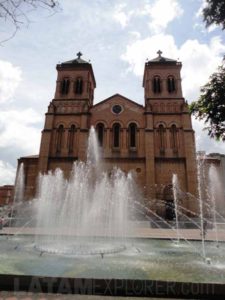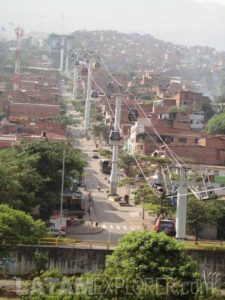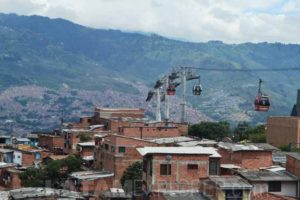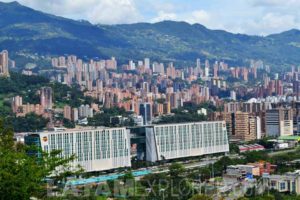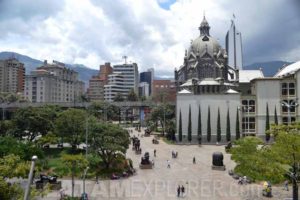Home > Destinations > Colombia > Medellín
Medellín
Nested at the Aburrá Valley, at an altitude of 1,500m (4,900ft), the capital of Antioquia is the second largest city of Colombia, being home to around 2.5 million people. The City of Eternal Spring, as it is also known, managed to leave behind its violent past, when it was known as one of the drug trafficking capitals of the world, to become a wealthy and modern city.
The local people, usually referred to as paisas, are an ingenious one. In fact, one of the best introductions to the area consists precisely in visiting the Pueblito Paisa, a reconstruction of a small Antioquian village. The attraction is located at the top of the Nutibarra hill, near downtown, and features a small stone fountain and a few typical buildings, like a church, a barber shop and the city hall. Due to its privileged setting, the place also offers great panoramic views to the city and to the mountain ranges surrounding it.

Medellín pulses at a faster pace around Parque de Berrío. This square, located at a central location at the crossroads of Calle 50 and Carrera 50 has been the official meeting point of the locals for generations and is now served by Medellín's busiest metro station. This is where the Candelaria Church, the first of the city, was built - for some time between the late 19th and early 20th centuries this served as the cathedral. Parque de Berrío also hosts the buildings of Banco de la República (Republic Bank) and of the Stock Exchange.

The Botero Square, directly connected to Parque de Berrío, is a 1.8 acres open space mostly dedicated to the exhibition of 23 sculptures created by Fernando Botero. Local legend has it that touching the Roman Soldier sculpture brings luck in love. The Antioquia Museum, facing the square, is an ambitious cultural project housed at the former Municipal Palace. The gallery dedicated to Botero features a display of 118 works of art from the greatest name in Antioquia's art scene.
The Metropolitan Cathedral stands a few blocks away, facing the Bolívar Park. This church, built between 1875 and 1931, has been declared a National Monument of Colombia. Around 1,120,000 bricks have been used on it, making this one the largest constructions ever built in the world using this material. The cathedral also features fine Spanish stained glasses and a small religious art museum.
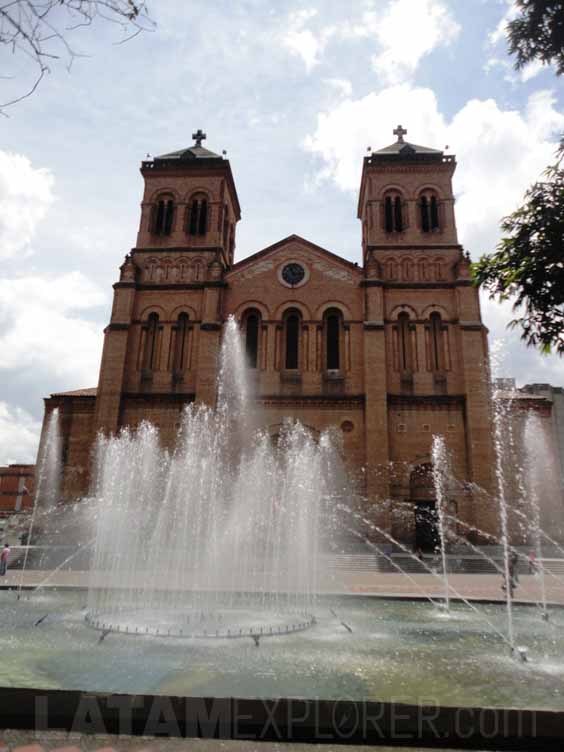
Medellín is particularly proud of its efficient public transport system, headed by two metro lines and supported by four cable car lines integrated to the metro (a fifth line is currently under construction). A trip in one of these cable cars is a nice way of experiencing some of the reality of the local people moving slightly away from the more traditional touristic path, while adding some excellent panoramic views to your memories. The most recommended lines are "K" and "L", to the north of the city. Line "L" in an extension to the city's regular metro system and, therefore, charges an additional fare (about 2 dollars), while granting access to Arví Park, one of the largest ecological reserves in the region.
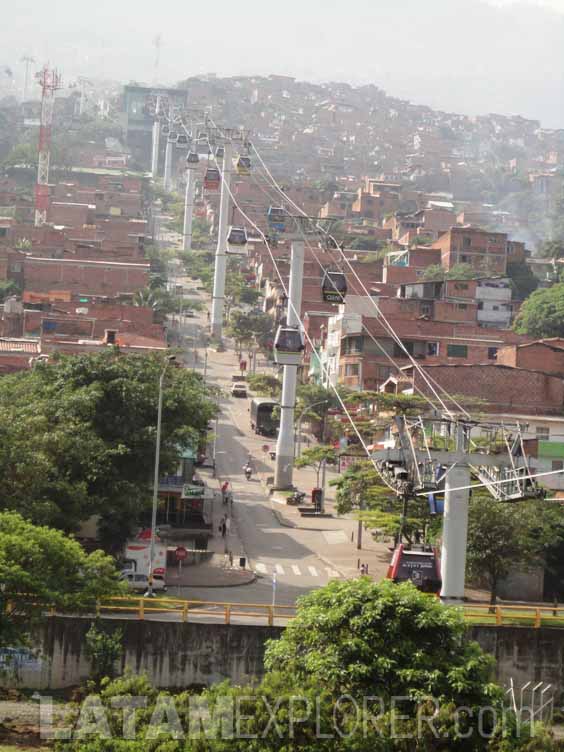
After a busy day wandering around, head to the El Poblado district for some of the best gastronomic offer in the city. This neighborhood in southern Medellín, particularly around the Lleras Park, concentrates many of the top hotels, restaurants and night life anywhere nearby.
The most recommended way of reaching Medellín is flying to its international airport, located some 50 minutes away from the city center. This airport is connected to the main domestic centers, besides a number of international destinations, like Lima, Panama City and several cities in the United States. Medellín also has an airport within the city limits, near downtown, used only by smaller aircrafts on domestic flights. By road, 4 hours (210km; 130mi) will take you to Pereira, in the heart of the Colombian coffee growing axis; in 7 hours (430km; 265mi) you can get to Bogotá, the national capital; and 11 hours (640km; 400mi) is all you need to reach Cartagena, the most popular destination in Colombia, on the shores of the Caribbean Sea.
